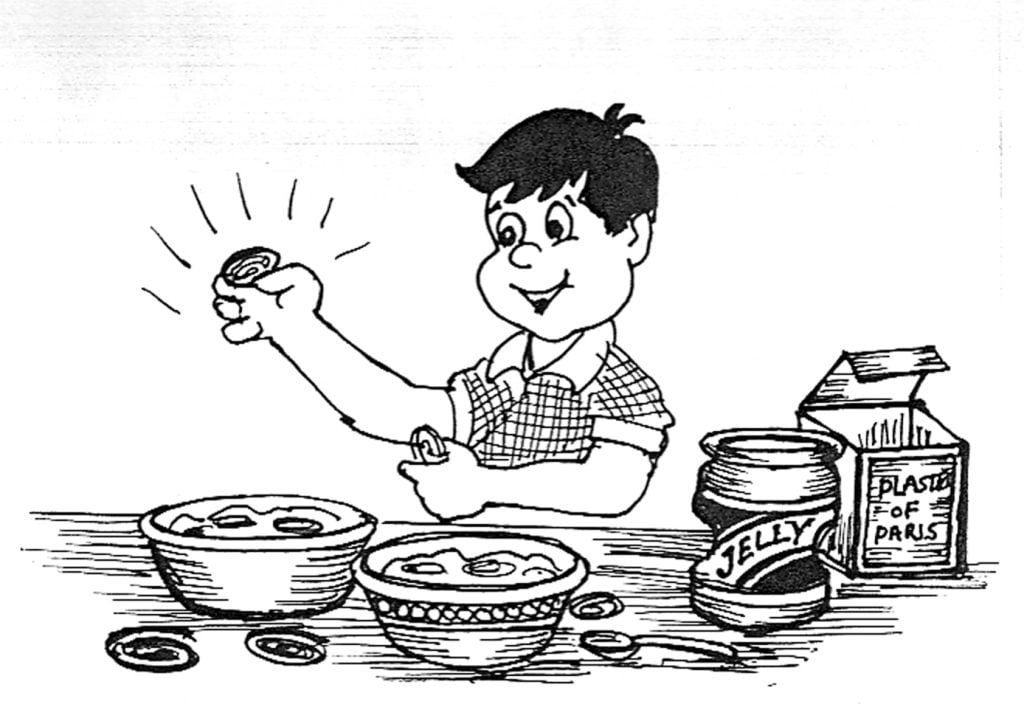
Materials Required:
l 2 plastic margarine tubs
l Plaster of Paris
l Old spoon
l Water
l Petroleum jelly
l Small seashells
Procedure:
- Fill a plastic margarine tub about ¼ full with plaster of Paris. While stirring with an old spoon, slowly add water until the mixture becomes creamy.
- Spread a thin coat of petroleum jelly onto the outside of several seashells. Press each shell into the plaster, but do not allow the plaster to rise above the edge of the shell.
- Let the experiment set overnight. The next day, gently pry the shells loose. You will see shell depressions in the plaster. Spread a thin coat of petroleum jelly into these areas.
- In another margarine container, mix up a new batch of plaster. Pour the fresh plaster into the depressions and let it harden overnight. The next day, lift the small plaster pieces from the surface. They will be exact models of the seashells.
This Is What Happens:
You have just performed the process by which a fossil—an impression of a plant or animal of the past that has been preserved in the earth’s crust- is created. A dying plant or animal is covered with mud, which hardens around its shape. As the matter decays and the cavity fills with minerals, a copy of the original plant or animal is formed from the minerals. Your experiment took two days, but real fossils are formed over hundreds of years. Scientists study fossils from long ago to learn what kind of plants and animals were alive during Earth’s long history. The study of fossils is called paleontology.
